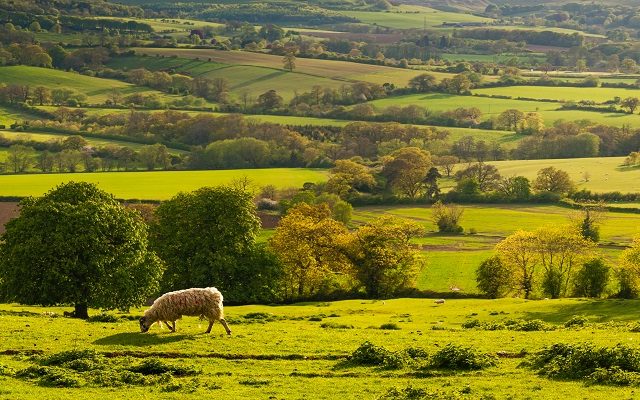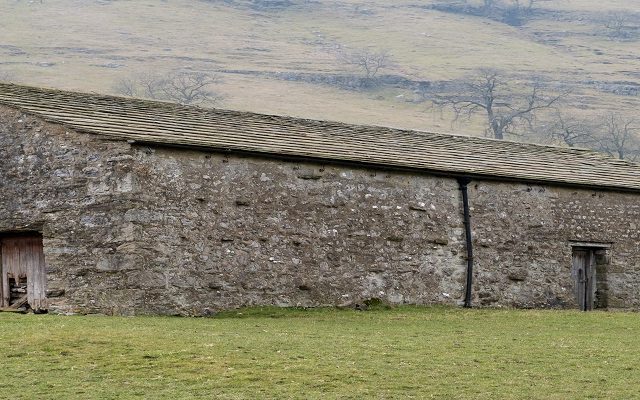Land Business | Down to earth: Protecting the health of UK soils
Scientists have warned there are only 100 harvests left in UK fields. As the focus turns to soil health, we find out how farmers can protect their most valuable resource.
There are more living organisms in one teaspoon of soil than there are people on the planet. It’s the lifeblood on which global agriculture relies for its very existence. Yet UK farming’s relentless drive for efficiency has left some of the country’s cereal-growing heartlands degraded and depleted.
‘It’s widely accepted in the industry that we’ve seen a decline in soil health in recent years,’ says Ed Hutley, from Strutt & Parker’s Farming Department. ‘Soil is a living thing and we have given it a fair amount of abuse. As a result, issues are beginning to manifest themselves.’
Professors from Sheffield University made the headlines in 2014 after they suggested that urban soils had more life in them than farmland. Compared with arable fields surrounding the city, Dr Jill Edmondson said allotments had 32% more organic carbon, 36% higher carbon to nitrogen ratios and 25% more nitrogen, and were significantly less compacted.
Dr Edmondson famously suggested that there could be fewer than 100 harvests left in UK fields unless significant action was taken. So how have we got to this stage?
Changes in modern farming practices are a key contributory factor, in particular the use of heavy machinery, which has increased significantly as farming has become more intensive.
‘From the 1970s to today, we have gone from 100hp machines to well in excess of 300hp, and their combined train weights are doing untold damage to small clay drainage pipes,’ explains Hutley.
The resulting compacted soils have contributed to weed pressures such as blackgrass, which thrives in waterlogged soils and holds huge seed returns. The problem has often been exacerbated by machines travelling in marginal weather conditions to satisfy busy schedules.
Save our soils
Other farm practices have also had a significant impact. There are now fewer mixed farms producing arable crops in tandem with rearing livestock, losing a balance that enhances soil health. Pressure on budgets has also led to fewer broad rotations being employed, which help to give the land a proper rest. Many farms will operate a rotation with just three crops, while the more progressive farms can look to as many as eight crops in the rotation to reduce mono-cropping.
The issue of soil health is already on the agenda of Secretary of State Michael Gove, who summed up the challenge in a recent speech. ‘A combination of heavy machinery, irrigation methods accelerating erosion and a determination to drive up yields has meant that soil has become less productive,’ he said. ‘Britain has lost 84% of topsoil since 1850 and the erosion continues at between 1cm and 3cm a year.’
So what is the way forward? Doom and gloom predictions are simplistic but, arguably, quite effective in raising the profile of soil health. What is not so easy is finding the solution. In reality there is no silver bullet, but a raft of options ranging from simple tweaks to major investment and full-scale changes in philosophy.
According to soil expert Dr Liz Stockdale, Senior Lecturer at Newcastle University, the first step is to understand how different locations affect soil quality and health.
‘Soil is unique. The interaction of geology and climate with vegetation creates a unique equilibrium in that situation,’ she explains. ‘You don’t need to understand the science, but what you do need to do is bring together that practical understanding of the soils in the place you’ve been managing with some general scientific principles to keep your production going forward.’
Dr Stockdale believes the focus should be on resilience and biological diversity. ‘Evidence suggests that increasing inputs of organic matter and reducing tillage act together to promote increased biological activity,’ she says. ‘There is some indication that resilience to extreme weather events may be increased as a result.’
The key approach is to take a longer-term view of managing and improving the soil, says Hutley: ‘The farms that are doing things right are not farming with a short term vision. They have a health check on where drains and ditches currently are and know their land type. They’re soil mapping and generally demonstrating good attention to detail, recognising problems and nipping them in the bud.
‘At a more practical level, if they have blackgrass, for example, they have a zero-tolerance to it. Farms are having to change rotations and introduce spring crops to tackle problematic weeds. They are using catch and cover crops to make sure they have ground cover at all times, as well as remedial cultivations to get the land in good fettle. There are some farms where we are doing constant cropping and then using low-disturbance drills to improve the soil quality.’
A ground investment
While a change in philosophy when it comes to soil health costs little more than the time it takes to do the research, implementation will nearly always require a significant financial investment.
Machinery is a key area of expenditure. Shifting from a wheeled to a tracked machine is becoming a more popular option. Modifications to an existing tractor are possible in some cases, but where retrofitting is not an option, the capital outlay on a new machine will require serious investment.
Additionally, in many instances the farm’s existing drills and cultivators will not be adaptable for a wholesale change in farm practice and will mean further investment. Direct drilling, for example, is a specialist job and the price of a second-hand drill usually starts at tens of thousands of pounds.
Less expensive investments involve improving field drainage, which can be as simple as subsoiling, unblocking drains or mole ploughing. These are well-rehearsed practices that require substantially less capital than the wholesale replacement of drains, although this may be required in some circumstances.
Once problems have been rectified, and a farm has the correct equipment at its disposal, well-established precision farming technology can help businesses minimise future compaction. This could be as simple as having GPS devices fitted to machines all the way up to employing full controlled-traffic farming systems across the whole farm.
High quality, high yields The path that farmers decide to take will be influenced by their own situation. However, Hutley believes that investing in soils – be that a time or financial investment – is vital if farmers are to thrive in the global marketplace.
‘The important thing for farmers to be aware of is that UK agriculture holds two strong cards – our soils and our climate,’ he explains. ‘We are in the privileged position of being able to produce high-quality milling wheats and yields per hectare above global averages. That is a huge advantage.
‘We are never going to compete on the global market on tonnage produced, so we need to protect what we are good at. If we are not careful and we neglect our soils, we are not going to have the high quality and yields that are essential for the future of UK farming.’
Case study: Learning the drill
‘The farm is nothing without its soil,’ says Guy Halsey, who runs the 750-hectare Gaddesden Estate, based at Bridens Camp in Hertfordshire. ‘Since 2000, we’ve been working to improve the organic matter of our predominantly heavy clay soils. This has meant no ploughing at all.’
Working with a contractor’s Mzuri strip till drill, the farm has been able to carry out all crop establishments without prior cultivation.
‘We’re making moves towards no-till farming and, this year, nearly all our oilseed rape was established in this fashion,’ explains Halsey. ‘It is a new way of doing things but not something you can go to overnight, particularly on heavy land.’
The improvement in soil structure has not been the only benefit. The farm has also reduced establishment costs as ploughing was slow and relatively expensive. In years of low commodity prices, growing crops more cheaply has helped to boost earnings.
‘This year, I’ve entered a field in the Yield Enhancement Network project, and the soil health indicator said it is right at the top of the scale in terms of being biologically active, which is pretty pleasing,’ says Halsey.
Reducing soil movement across the whole of the farm, with the goal of zero-till cereal establishment, is a longer-term aim, as is achieving year-round ground cover.
‘Generally speaking, we’re moving towards conservation agriculture, which includes continuously covered soil,’ says Halsey. ‘Nature doesn’t leave any soil bare, so why should we? We’re trying to have wide rotations and keep the soil covered at all times.’
Read more
This article originally appeared in Strutt & Parker’s magazine, Land Business Autumn/Winter 2017. Read the full magazine here.






